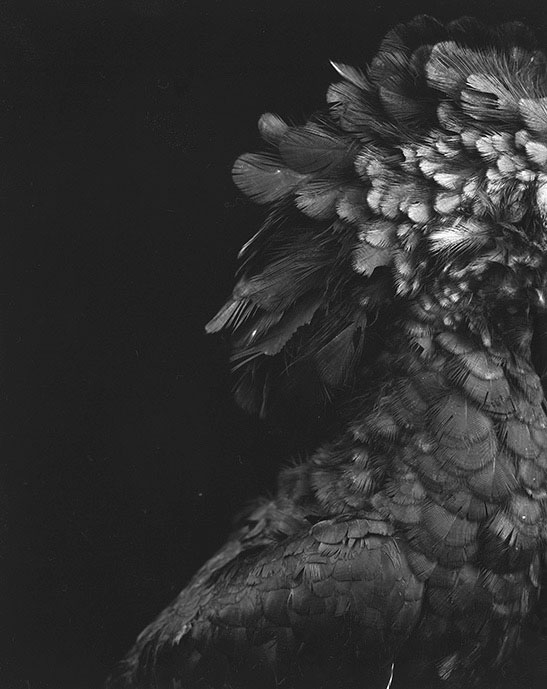Some Birds, By Nathalie Amand (Soignies, 1968), The Gallery had already shown the Hommages licencieux (Licentious Homages), small erotic vignettes in reference to the daring images circulating most often under the coat in the 19th century and until the 1960s (think in particular of Molinier but also of Bellmer, even to Man Ray, but especially to these innumerable anonymous operators). The Box Gallery have also given pride of place to her collages, sometimes integrating fragments of her own shots to associate them with illustrations taken from old works, in the vein of surrealism (kinds of exquisite corpses where we find the influence of Georges Hugnet but especially that of Max Ernst and the famous booklets which constitute Une semaine de bonté – A week of kindness).
She also approached, always with the help of her view camera loaded with black and white film, other major themes such as landscape, portrait, still life or even self-portrait.
For this third exhibition at the gallery, we have brought together around thirty portraits (?) of stuffed birds from the collections of the Tournai Natural History Museum.
The question mark attached to the term “portraits” is justified in that these different birds almost systematically turn their backs on us, thus making themselves more or less impossible to identify.
Everything is limited to shapes, materials, reflections, subtle play of light. Nothing that allows us to recognize this or that species, to determine if we are in the presence of a familiar animal or an exotic specimen. Majestic raptor or tiny sparrow? Waterfowl or terrestrial wading bird? Not a beak, not a paw to put us on the path, to help us…
Feathers, again and again. It is therefore up to the spectator to appeal to his imagination, to try to see clearly, to adorn these birds with shimmering or, on the contrary, discreet colors, suitable for camouflage.
Moreover, we cannot fail to establish parallels, to detect similarities between the systematism of this series and other sets that have made history in the history of photography.
The frontality, the rigor of the framing, the absence of decoration inevitably make one think of the plants inventoried in the 1920s by the German Karl Blossfeldt in Urformen der Kunst or of the men and women pinned on a white background by Richard Avedon in the 1980s, clinical portraits brought together in In the American West.
Each image by Nathalie Amand is accompanied by a caption which identifies the bird photographed. This information is both useful and superfluous. Much more than scientific accuracy, than the possibility of cataloguing, the essential here lies in the beauty, in the apparent fragility, in the dream to which this group of anonymous beings invites us.

